MV Ixius – Gaming Notebook Review
MV Ixius – Gaming Notebook
MV has produced the first UK notebook to sport the nVidia GeForce GO 6800 graphics chipset. If you're looking for the ultimate mobile gaming machine, read on....
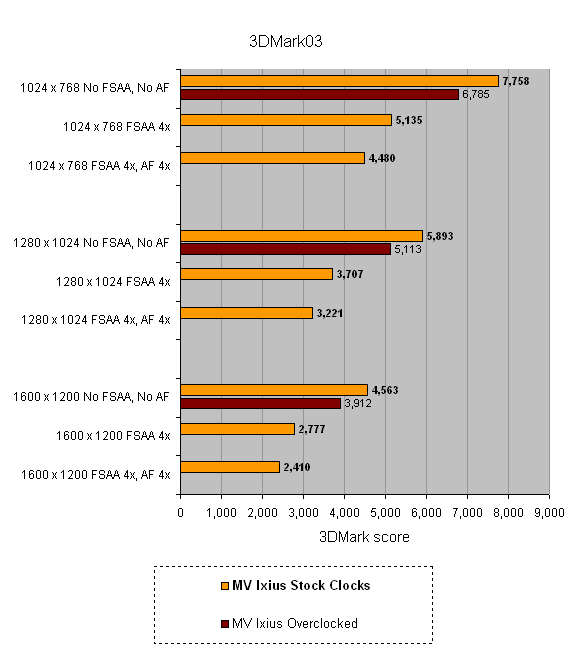
Verdict
Key Specifications
- Review Price: £1879.00
A couple of weeks ago I reviewed the MV Mobeus and was won over by its small chassis and feature rich specification. Now I have another notebook from MV in front of me and it couldn’t be more different from the Mobeus. The Ixius is huge – 297 x 298 x 49 (WxDxH) – there’s no two ways about it. This is not a notebook that you’d want to carry around with you, even for a couple of hours. But the Ixius isn’t aimed at the regular notebook user, it’s targeting the hardcore gamer that wants a mobile machine that can handle all the latest 3D epics.
There was a time when playing games on a notebook was a pretty unfulfilling exercise, but recently that has changed. A lot of time, effort and research has been poured into notebook gaming, with the mobile graphics chipsets starting to resemble the current desktop generation, rather than being a couple of generations behind. So, before I get into the nitty gritty of the Ixius I might as well mention its party piece – the nVidia GeForce GO 6800 graphics chipset.
The GeForce GO 6800 is the latest and greatest mobile graphics chipset from nVidia, and it represents a huge step forward in performance. Just like the desktop GeForce 6800, the GO 6800 sports 12 pixel pipelines and five vertex pipelines, while the 256MB of memory should keep even the most texture hungry game happy. Although nVidia claims that the GO 6800 is good for a core clock speed of 450MHz with the memory running at 600MHz (1.2GHz effective), the early sample inside the Ixius is running at a core frequency of 275MHz, while the 256MB of DDR memory is clocked at 300MHz (600MHz effective).
So, MV has definitely pushed the boat out when it comes to graphics technology, but what is the rest of the specification like? To be honest, it would have been hard for MV to come up with a better set of supporting components for the GO 6800 chipset. Sitting in the CPU socket is an Intel Pentium 4 running at 3.6GHz, while there’s 1GB of DDR2 memory – Corsair branded memory no less! The 60GB Hitachi hard disk seems a little small for a device this size, especially considering the target market. The hard disk does spin at 7,200rpm, so performance should be good. However, if you are serious about your disk performance, MV offers a 120GB RAID 0 array option on the Ixius, although pricing hasn’t been confirmed for this yet.
Although the review sample I looked at came with a bog standard DVD-ROM drive, customer units will ship with a Sony dual layer DVD writer and I’d expect nothing less on a machine like this. Let’s face it, anyone who buys a machine like the Ixius is likely to use it as their sole PC, so it really does need to have all the bases covered.
Of course what’s inside a machine like this is very important, but it doesn’t make the external ergonomics any less critical. Considering that the Ixius is likely to be used instead of a desktop computer, it needs to afford its user a good ergonomic experience, even for prolonged periods of use.
The keyboard is obviously important on a machine that’s going to be used for all your computing duties. Opening up the lid of the Ixius reveals a keyboard that looks inviting. Often when I look at large notebooks, the space hasn’t been used to its best effect, but thankfully I can’t level such a criticism at the Ixius. MV has made the most of the huge surface area and included a full size keyboard, complete with numeric keypad – something I thought was a great idea at first.
Due to the huge dimensions of the chassis, there is a massive area in front of the keyboard, which can make it difficult to find a comfortable typing position, although if you’re happy to rest your forearms flat on the surface it’s not a problem. What is a problem though is that this area gets very warm and can be a bit uncomfortable when you’re typing for long periods.
The keyboard layout is a little strange. Although the Tab, Caps Lock, Return and Backspace keys have all been made large, as I would want them to be, the left Shift key is tiny, while the right one is huge. I find this particularly odd since the left Shift is the one that is used more often. On a plus point though, the Ctrl key is located at the bottom left hand corner of the keyboard where it should be, making keyboard shortcut use easy.
But for me the biggest problem with the keyboard is the numeric keypad. Now, there’s nothing intrinsically wrong with the keypad, and if you use a keypad regularly you might find its inclusion a real bonus. However, the knock-on effect of the keypad is that when you’re typing on the keyboard you can’t position yourself central to the screen, because the main keyboard itself is not central. I’m not sure if other users will find this as disconcerting as I did, but it just felt that I was positioned to one side while I was typing. To be fair though, I didn’t find the keyboard position slowing down my typing too much, and the action of the keyboard is actually very good – there’s very little flex even when hammering the keys and the spring back is very strong, bouncing your fingers back up, ready for the next key strike.
MV has again made good use of the space at hand, making sure that the touchpad is a decent distance away from the keyboard and avoiding any inadvertent cursor movement when hitting the Spacebar. The touchpad is a pretty good example and far superior to the erratic example that was seen on the MV Mobeus. Below the touchpad are two large grey selector buttons, while the right hand side of the pad can be used for scrolling through web pages and documents.
The last part of the ergonomic checklist is the screen, and MV has equipped the Ixius with a 17in widescreen display. The screen is a decent one, with a wide viewing angle and even lighting across the surface – I did notice one dead pixel though, something that I haven’t seen on a TFT display for quite some time. The resolution is also a little disappointing considering the physical size of the display, at 1,440 x 900. Now I can accept that it might add too much cost to implement a 1,920 x 1,200 screen like the one seen in the Sony VAIO VGN-A117S, a 1,680 x 1,050 resolution would have been a nice compromise. After all, the Voodoo Envy M:860 sported a 1,680 x 1,050 resolution with only a 15.4in screen. Of course MV has tried to keep the cost of the Ixius below the level that Voodoo sets, so certain compromises have had to be made.
The general design of the Ixius is not what I’d call stylish, but it’s not easy making a notebook this size look sleek and sexy. The lid is finished with a brushed aluminium panel and the shiny chrome centre square will have the MV logo etched on production models, replacing the stick-on logo seen in the images. Hopefully it will be the correct way round, so that it’s not upside down when the lid is open.
Connectivity is very well catered for. For wired connections there’s an integrated Realtek 10/100/Gigabit Ethernet adapter as well as a 56K modem. If you prefer wireless connectivity you won’t be disappointed either – there’s an 802.11b/g WiFi adapter as well as integrated Bluetooth. There’s also what looks like an IrDA port, but I couldn’t get any other IR devices to recognise or connect to it.
Having a look around the chassis there’s a vast array of ports and connectors. On the left is a 7-in-1 memory card reader, a single Type II PC Card slot, four USB 2.0 ports, two four-pin FireWire ports, an S-Video output, line-in, microphone, headphone and S/PDIF ports. At the rear you’ll find an Ethernet port, the modem socket, PS/2 port, parallel port, serial port and a DVI output. There’s no D-SUB output, but MV does supply an adapter in case you want to connect the Ixius to a monitor with an analogue input. There’s also a rubber bung hiding an S-Video input that’s labeled with a camcorder picture, and what looks like a composite video input, labeled cable TV.
The right side of the chassis is dominated by the optical drive bays, yes that’s right, I said bays. The Ixius can accommodate two optical drives if you desire such a configuration, although the review unit only had the top bay populated.
Performance was, unsurprisingly, excellent from the Ixius, and it turned in some of the fastest 3D scores I’ve ever seen on a notebook. If you’ve read my Mobile Battle Ground article, then you will know that the pre-production Mobility Radeon X800 notebook I looked at produced higher scores than the Ixius, but I am willing to hold off any firm judgement until I have retail samples featuring both chipsets. So, as far as products that you can buy here and now go, the Ixius is the fastest gaming notebook to make its way into the TrustedReviews labs.
Since it appeared that the GeForce GO 6800 chipset had been clocked quite conservatively we decided to tweak it a little and see how it affected the benchmark scores. Bumping the core speed up to 330MHz and the memory up to 350MHz (700MHz effective) produced some interesting results. In both 3DMark03 and 3DMark05 the scores actually dropped with the GO 6800 running at the higher clocks. In fact, if you look at the graphs you’ll notice that the scores remain either the same or drop with the graphics chip overclocked in most of the tests. The one exception is Doom 3, which saw a decent performance increase at the basic 1,024 x 768 resolution.
One reason for the reduced performance could be that the Ixius is getting too hot and the hardware is being throttled to compensate for the excessive heat. Just sitting here typing on the Ixius I can feel the heat radiating through my wrists, and I’m not doing anything particularly stressful to the hardware. Fire up a game and the fans spin up quite loud in an attempt to stem the heat, but it would appear that the 275MHz core and 300MHz memory clocks are about as far as this chassis will comfortably go.
Despite the reduced performance when overclocking, the Ixius really is an amazing gaming notebook that produces numbers that high-end desktop machines would have been proud of not too long ago. But when it comes to 2D performance, the Ixius is still eclipsed by the blisteringly fast Rock Xtreme!, showing that the extra cache on the Pentium 4 Extreme Edition more than makes up for a lower clock speed. We didn’t bother to run Mobile Mark since it traditionally won’t even complete on this type of notebook, which is fair enough since battery life is unlikely to be of major concern to the target customer.
MV has done a good job with the audio, and the integrated speakers produce loud and clear sound effects. Even if you wanted to use the Ixius to listen to music, the integrated speakers do a pretty good job, although as always with a notebook, they lack a certain degree of bass.
Of course MV has realised that the target market is likely to want to use the Ixius for multimedia purposes as well as gaming, so, like the Mobeus, the Ixius can be used to watch movies or listen to music without booting into Windows. On the front of the case you’ll find an array of media controls, as well as an LCD display to make controlling your audio playback simple without even opening the lid.
In an attempt to throw everything but the kitchen sink into the Ixius, there’s even a webcam mounted just above the screen, in case you want to partake in some video conferencing when you’re not gaming. Software is limited to Windows XP Home, Ability Office and Panda Anti-Virus, but that’s enough to get you started out of the box. Rounding off the package is a standard one year, parts and labour warranty.
Of course with a feature set like this, made up of cutting edge, powerful components, you’re probably already thinking that the Ixius won’t come cheap, and you’d be right. However, at £1878.83 including VAT, it’s not as scarily expensive as it could have been.
So, is it worth the money? Well that depends on what you want to use the Ixius for. If you plan to use the Ixius purely to play the latest games, anytime and anywhere, it will fulfill your needs perfectly, although then the price does seem steep. But if you want the Ixius to be an all encompassing personal computing solution the price seems reasonable, but the machine doesn’t quite hit the mark.
Although MV has crammed a massive amount of features into the Ixius, some of the basics have been overlooked. The screen resolution is disappointingly low considering its physical size, the keyboard layout doesn’t quite work and the machine gets too hot for comfortable prolonged use. It’s the latter point that I found most alarming, since while typing this review I felt like I was resting my forearms on a radiator – it wasn’t scalding or anything, but very warm. The heat problem is also borne out by the fact that overclocking the graphics chipset actually causes a decrease in performance, indicating that the machine as a whole gets too hot when this is done. Although, to be fair to MV, it doesn’t guarentee any overclocking performance.
So, the Ixius isn’t perfect, but it’s still the most capable mobile gaming platform that I’ve ever seen. It’s worth remembering that this is the first gaming notebook that MV has launched, and only the second notebook that it has ever launched, and with that in mind MV has done very well. I have no doubt that MV will refine the Ixius and that many of the points I’ve raised will be addressed, but as it stands, the Ixius is a good machine, but it could have been even better.
”’Verdict”’
MV has created a blisteringly fast gaming notebook that will happily play pretty much anything you throw at it. There are some issues with the ergonomics and chassis cooling, but this is an early sample and hopefully MV will address these points. Ultimately, the Ixius is what it is – a high-powered gaming PC that you can take with you anywhere, and if that’s what you’re looking for, you won’t be disappointed.

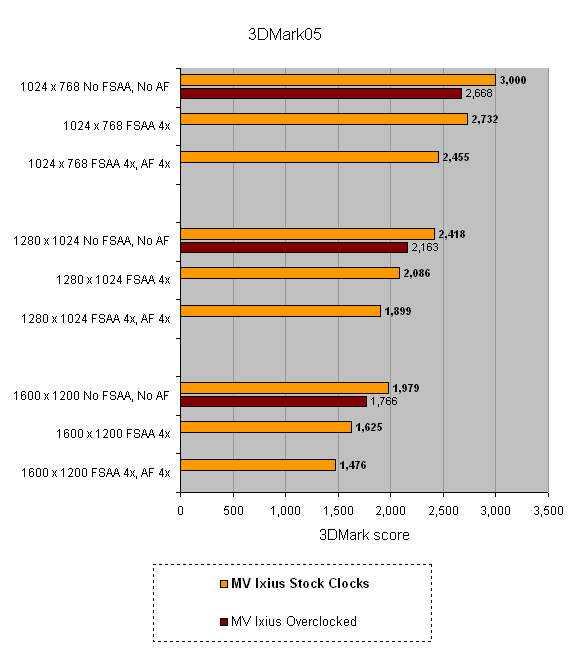
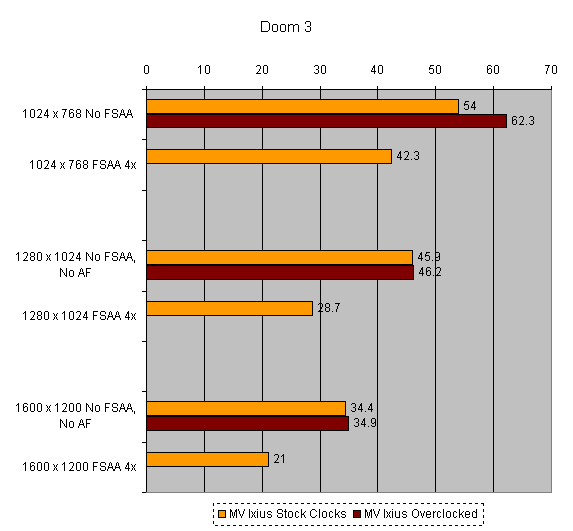
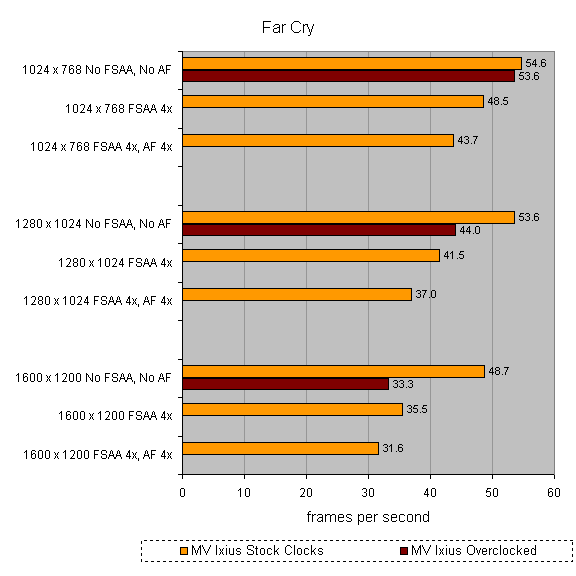
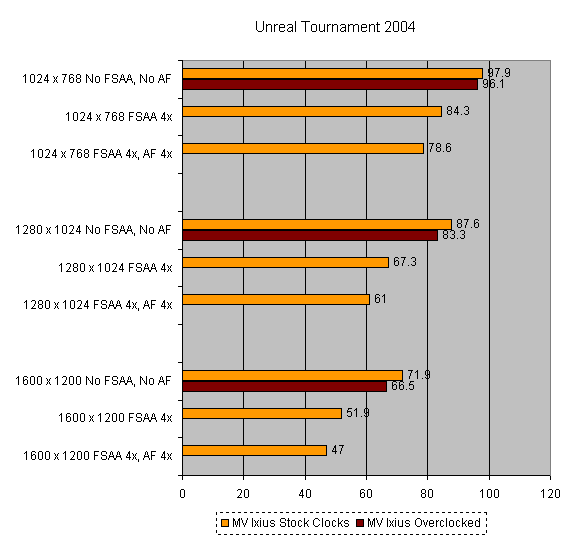
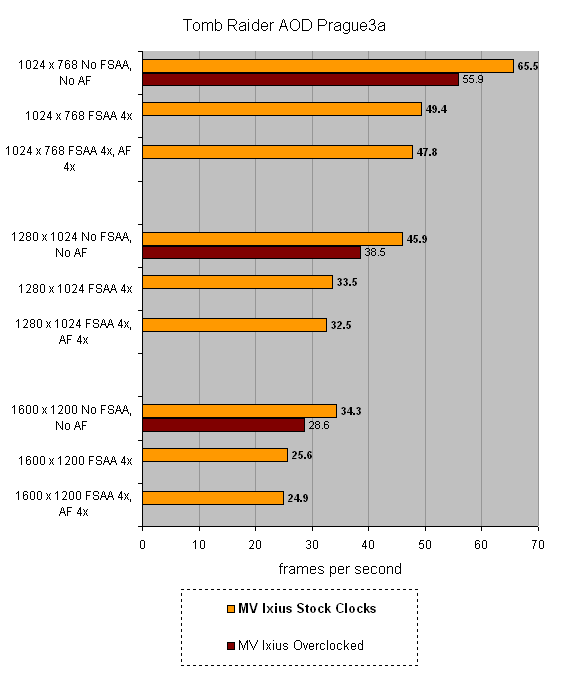
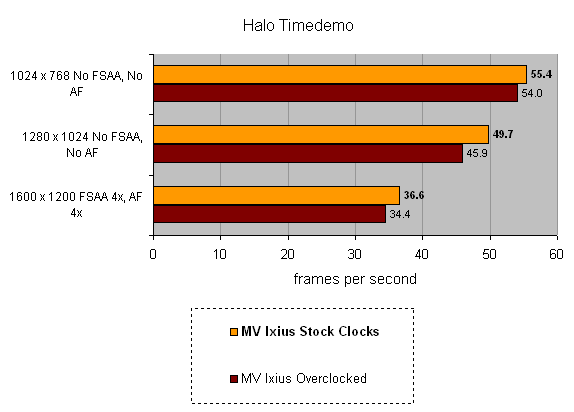
How we test laptops
Unlike other sites, we test every laptop we review thoroughly over an extended period of time. We use industry standard tests to compare features properly. We’ll always tell you what we find. We never, ever, accept money to review a product.
Trusted Score
Score in detail
-
Performance 10
-
Value 7
-
Features 8

